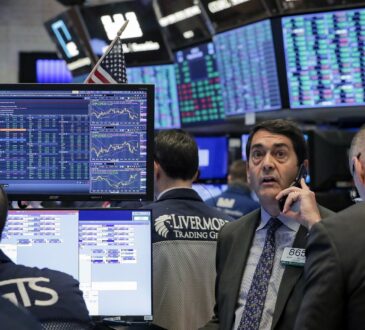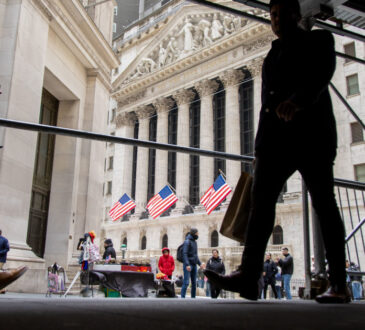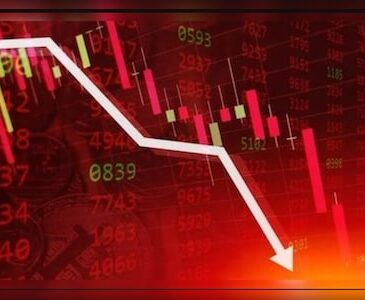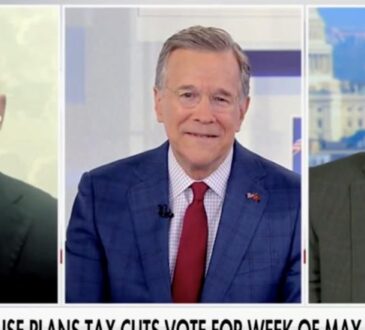This Hasn’t Happened Since 1969 and It Could Mean Trouble for the Stock Market. Here’s What You Need to Know.

1969 was a historic year. Neil Armstrong and Buzz Aldrin walked on the Moon. The first Boeing 747 took to the skies. And The Beatles released their iconic album Abbey Road.
There was, however, something else going on in that year — an economic trend that strangely mirrors a similar trend that is occurring today. It concerns the U.S. unemployment rate, and it could spell trouble for the stock market. Here’s what you need to know.

Image source: Getty Images.
The U.S. unemployment rate
As of this writing, the U.S. unemployment rate is 3.7%. Historically speaking, this is low — very low. The average unemployment rate, dating back to the 1940s, is 5.7%.
But it’s not just the actual rate that is unique. It’s the length of time that the unemployment rate has been so low.
In point of fact, the U.S. unemployment rate has been at or below 4% for more than 24 months — dating back to the start of 2022. That’s one of the longest such stretches on record — and the longest since, you guessed it, 1969. To put this in context, the unemployment rate didn’t get below 4% at all between 1970 and 2000. Not once.
U.S. Unemployment Rate data by YCharts.
Yet, for the last two years, the rate hasn’t climbed above 4% for even a single month. But, you may be thinking, isn’t a low unemployment rate a good thing?
Well, yes and no. On the one hand, a low unemployment rate is beneficial. It means jobs are plentiful; workers can easily find employment or change jobs. Moreover, wages are likely to increase since the labor market is tight.
However, a low unemployment rate has its downsides, too. Tight labor markets mean that employers may find it difficult — if not impossible — to find workers. Indeed, staff shortages can force businesses to reduce their hours of operation, increase prices, or shutter completely in a worst-case scenario.
In addition, what’s most concerning about a prolonged period of low unemployment isn’t the metric itself; it’s more about how that period ends. Typically, it ends in a nasty way: a recession.
A recession on the horizon?
Let’s look at that 70-year chart of unemployment rates again, but this time, let’s include recessions (they appear as shaded gray areas).
U.S. Unemployment Rate data by YCharts.
As you can see, recessions tend to start right after prolonged periods of low unemployment end. In other words, when the unemployment rate rises fast. You can see this in the chart in the following years: 2020, 2009, 2002, 1991. But the most revealing similarity is in 1969, so let’s zoom in on that period.
U.S. Unemployment Rate data by YCharts.
Today, like then, the U.S. unemployment rate has been extremely low for a long time, more than three years. The low unemployment continued until early 1970, when the unemployment rate skyrocketed. It peaked at 6.1% at the start of 1971, just as the recession ended.
Why does it matter to investors?
In brief, this all matters because a recession is bad news for the stock market. Let’s look at one more chart to see why.
U.S. Unemployment Rate data by YCharts.
Note that the Dow Jones Industrial Index lost about 37% between late 1968 and mid-1970, right during the period when that extremely long stretch of low unemployment was coming to an end. Now, keep in mind two things:
First, every recession is different. Recessions occur due to unique circumstances that no person can fully anticipate. In short, there’s no way to know for sure that we’re about to go into recession.
Second, even if we are headed straight for a recession — and a major stock market correction — there’s no need to panic. Indeed, long-term investors should welcome stock market corrections because they allow us to accumulate stocks at lower prices.
To close, let’s remember that recessions and stock market corrections are inevitable. It’s impossible to know whether it will come this year or 10 years from now. But either way, savvy investors will see it as an opportunity rather than a reason for panic.








